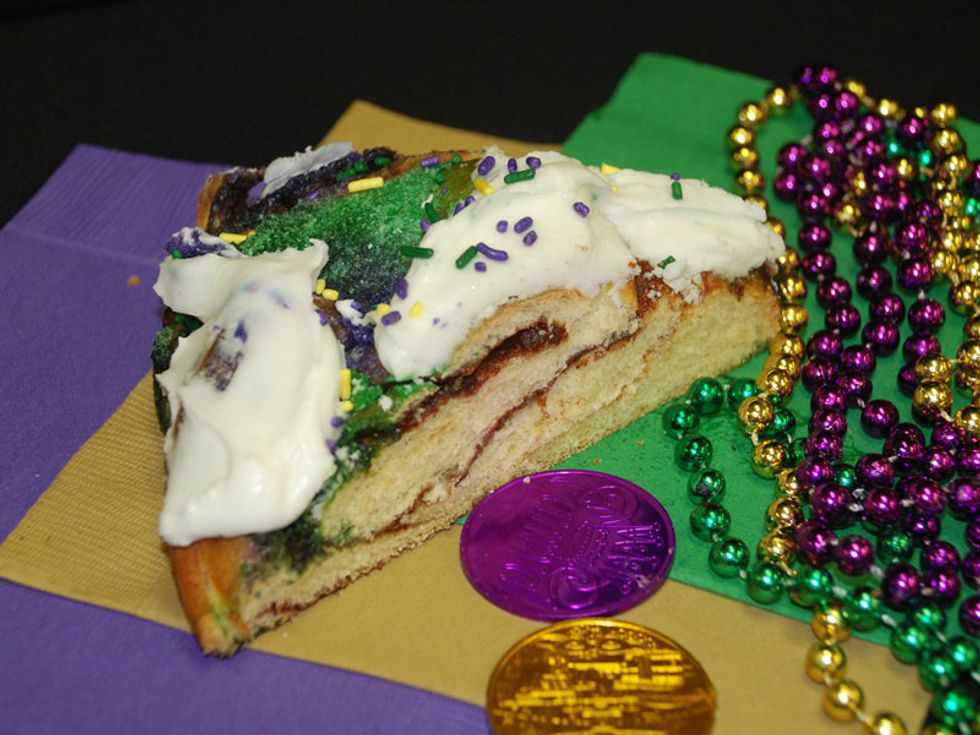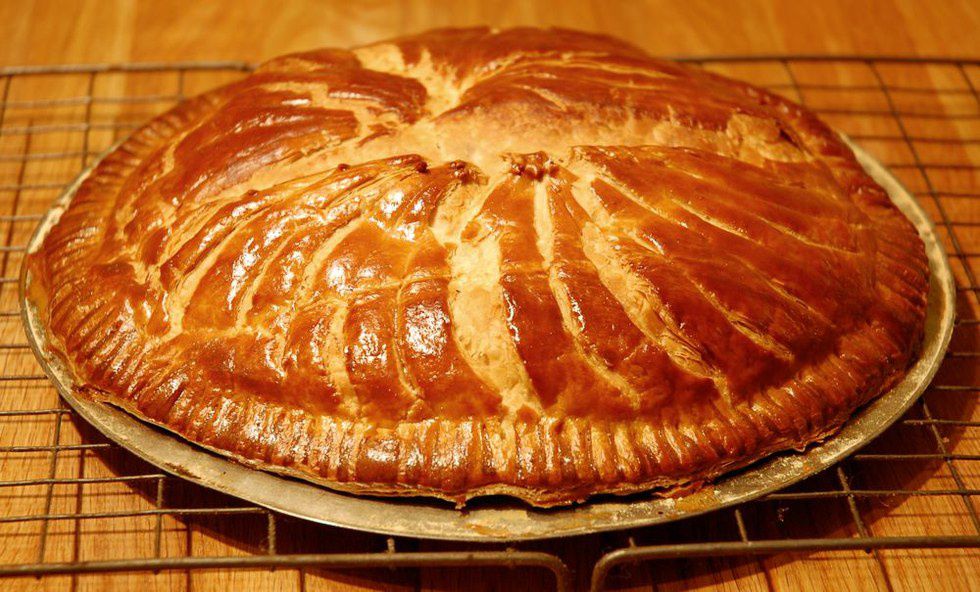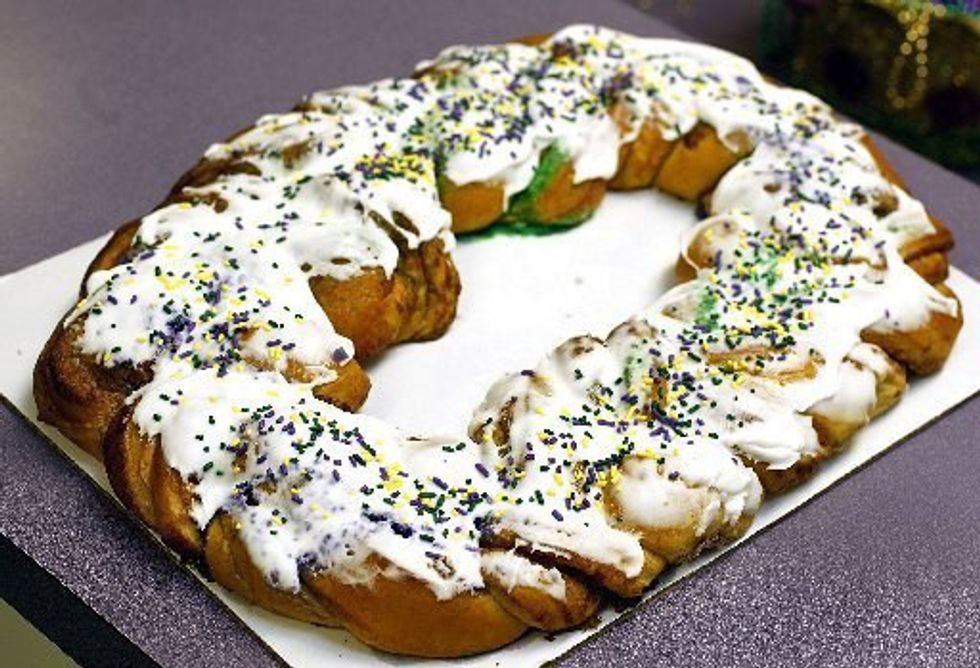Down here in New Orleans, we love our food. I’m talking gumbo, jambalaya, red beans, pralines, and crawfish. But when it comes to king cake, we don’t mess around! We are dedicated enough to wake up at 6 am and wait in hour long lines just to get a slice of that Randazzo’s king cake. Personally, king cake is my weakness. I always knew that the king cake had a long history, but I wanted to learn more details on this traditional dessert. Turns out, the history of the king cake is just as rich as the flavor.
It is believed that the king cake originated in the 12th century France. These early Europeans would celebrate the three wise men bringing Jesus their gifts 12 days after Christmas (January 6th) and called it the “Feast of the Epiphany,” “Little Christmas,” “Twelfth Night,” or “King’s Day.” These early king cakes were a dry French bread-type of dough topped with sugar.
Traditional French 3 Kings Cake
The cakes were made circular to symbolize the circular route that the three wise men took in order to shake off King Herod since King Herod was planning to kill baby Jesus. Some people say today that it is oval to represent a unity of faiths. Before our current baby Jesus trinket was invented, the early Europeans would hide a bean, pea, coin, or pecan in the king cake. In these days, finding the hidden prize meant receiving good luck and prosperity for the upcoming year and being declared King or Queen for the day. In other parts of France, the trinket finder was expected to contribute to a worthy cause like education of a young person. Originally, the king cake was only served on King’s Day, but today we get king cake all Carnival season long, baby!
Today, our king cakes are sweet, cinnamon roll-like, oval shaped cakes decorated with purple, green, and gold sugar and icing. Three colors were chosen because there were three wise men and these colors were meant to resemble a jeweled crown like the three wise men wore. The color purple represents justice, green represents faith, and gold represents power. There is a single plastic baby Jesus hidden in each king cake. Since New Orleans is a heavily Christian-oriented city, the baby Jesus is a celebration of the Christian faith. This tradition has people all over the city searching for the baby in the cakes just like the wise men searched for Jesus in biblical times. Traditionally, New Orleanians throw king cake parties. The person who finds the baby in the cake is required to throw the next king cake party and buy the next king cake. People also bring these cakes to work, school, or community events where the lucky person who gets the baby is required to buy and bring the next king cake. Because of this tradition, King Cake often becomes a daily or weekly treat in offices, communities, and families all Carnival season long. Best tradition ever? I think so.

Many people around New Orleans try to put their own spin on the traditional king cake, which led to stuffing them with cream cheese or fruit fillings or topping them with various twists. Personally, I stick with traditional because adding something to it just takes away the experience of a real king cake flavor.
The official Carnival season begins on January 6th and ends on Mardi Gras day. So grab a king cake at every opportunity possible for the entirety of the season. Now you can enjoy this amazing dessert with even more appreciation of why it exists, where it came from, and how it developed into the sweet dessert it is today. Welcome to the carnival season and laissez le bon temps rouler! (P.S. The King Cake Festivalis on January 29th this year!)





















